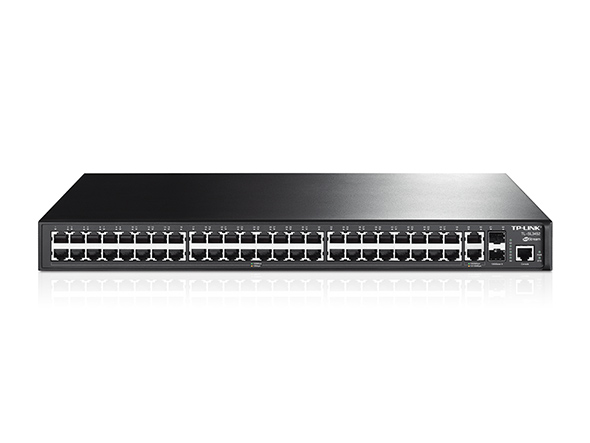Secure Networking
TP-LINK TL-SL3452 provides IP-MAC-Port-VID Binding, Port Security, Storm control and DHCP Snooping which protect against broadcast storms, ARP attacks, etc. It integrates some typical DoS attacks to select. You can protect these attacks more easily ever than before. In addition, the Access Control Lists (ACL, L2 to L4) feature restricts access to sensitive network resources by denying packets based on source and destination MAC address, IP address, TCP/UDP ports and even VLAN ID. Moreover, the switch supports 802.1X authentication, which is used in conjunction with a RADIUS server to require some authentication information before access to the network is allowed. Guest VLAN function supports to enable the non-802.1X clients to access the specific network resource.
Advanced QoS Features
To integrate voice data and video service on one network, TL-SL3452 applies rich QoS policies. Administrator can designate the priority of the traffic based on a variety of means including IP or MAC address, TCP or UDP port number, etc, to ensure that voice and video are always clear, smooth and jitter free. In conjunction with the Voice VLAN the switch supporting, the voice applications will operate with much smoother performance.
Abundant Layer 2 Features
For more application of layer 2 switches, TL-SL3452 supports a complete lineup of layer 2 features, including 802.1Q tag VLAN, Port Isolation, Port Mirroring, STP/RSTP/MSTP, Link Aggregation Control Protocol and 802.3x Flow Control function. Any more, the switch provides advanced features for network maintenance, such as Loop Back Detection, Cable Diagnostics and IGMP Snooping. IGMP snooping ensures the switch intelligently forward the multicast stream only to the appropriate subscribers while IGMP throttling & filtering restrict each subscriber on a port level to prevent unauthorized multicast access.
Enterprise Level Management Features
TL-SL3452 is easy to use and manage. It supports various user-friendly standard management features, such as intuitive web-based Graphical User Interface (GUI) or industry-standard Command Line Interface (CLI), either administration traffic can be protected through SSL or SSH encryptions. SNMP (v1/2/3) and RMON support enables the switch to be polled for valuable status information and send traps on abnormal events. In addition, integrated NDP/NTDP protocol, the switch supports to be managed by the commander switch through IP clustering function more easily.

